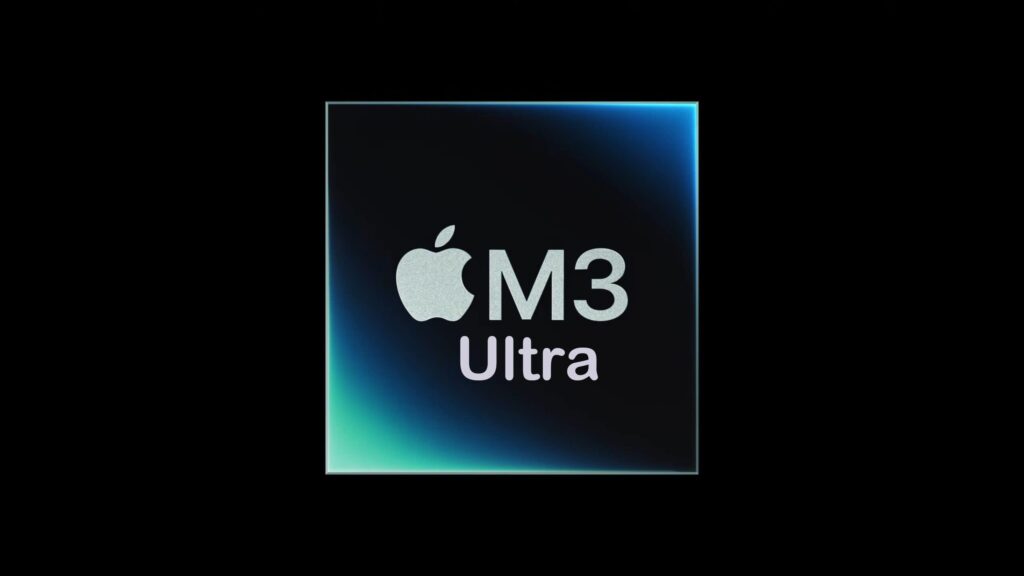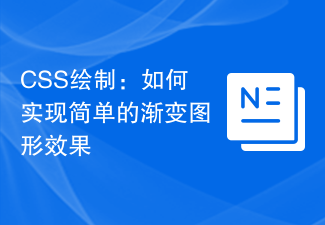
In order to represent a graph in Java using an association matrix, a data structure must be constructed that contains the relationships between vertices and edges. An association matrix is a two-dimensional array in which the rows and columns represent vertices and edges respectively, and the entries represent the connections between them. If there is "1" at position (i, j), then vertex i intersects edge j. Although more memory may be required for large graphs, this approach allows efficient graph operations such as inserting or deleting edges. By creating this data structure in Java, programmers can efficiently build and manipulate graph structures to solve many problems in computer science and related fields.
Correlation matrix
In graph theory, the relationship between vertices and edges in the graph is mathematically represented by an association matrix. The correlation matrix is a two-dimensional binary matrix in which the columns represent edges and the rows represent vertices. The entry at position (i, j) is '1' if vertex i is adjacent to edge j; otherwise it is '0'. This matrix effectively represents the structure of the graph, making it easier to perform operations such as adding and removing edges. It is an important concept in computer science and other disciplines involving complex networks because it provides a key tool for analyzing and solving graph-based problems.
usage instructions
Adjacency matrix
Adjacency list
Edge list
Adjacency matrix
An adjacency matrix is a two-dimensional array used to represent connections between vertices when creating graphs in Java. If there is an edge connecting vertex i and vertex j, you can see it in cell (i, j) of the matrix. A "1" in a cell means there is an edge, while a "0" means there is no edge. This matrix is often used in dense graphs because it helps to quickly traverse and study the graph. However, due to its square form, it can be memory-intensive for large plots. Programmers can effectively model, analyze, and manipulate graph topologies for a variety of applications by using adjacency matrices in Java.
algorithm
-
Determine the number of vertices of the graph in the first step
Construct a two-dimensional array (matrix) of [number of vertices] x [number of vertices].
Initialize the matrix by setting all entries to 0, meaning there are no edges initially.
In the graph, set the correlation matrix cell of each edge (i, j) to 1 to represent the connection between vertices i and j.
Matrix symmetry is ensured in undirected graphs because edges (i, j) and (j, i) are the same.
Includes routines for testing edge existence, locating vertex neighbors, and adding/removing edges.
To verify the accuracy and functionality of the implementation, please test it using the example diagram.
Example
#include <iostream>
#include <vector>
using namespace std;
class Graph {
private:
int V;
vector<vector<int>> adjMatrix;
public:
Graph(int vertices) : V(vertices) {
adjMatrix.resize(V, vector<int>(V, 0));
}
void addEdge(int u, int v) {
adjMatrix[u][v] = 1;
adjMatrix[v][u] = 1;
}
void printAdjMatrix() {
for (int i = 0; i < V; ++i) {
for (int j = 0; j < V; ++j) {
cout << adjMatrix[i][j] << " ";
}
cout << endl;
}
}
};
int main() {
int numVertices = 5;
Graph graph(numVertices);
graph.addEdge(0, 1);
graph.addEdge(0, 4);
graph.addEdge(1, 2);
graph.addEdge(1, 3);
graph.addEdge(1, 4);
graph.addEdge(2, 3);
graph.addEdge(3, 4);
cout << "Adjacency Matrix:\n";
graph.printAdjMatrix();
return 0;
}
Output
Adjacency Matrix: 0 1 0 0 1 1 0 1 1 1 0 1 0 1 0 0 1 1 0 1 1 1 0 1 0
Adjacency list
The adjacency list is a Java data structure that efficiently stores connections. When representing a graph, an adjacency list is a Java data structure used to efficiently store relationships between vertices and their adjacent vertices. Each linked list or array that makes up this structure corresponds to a vertex and contains the vertex's neighbors. This approach works well for sparse graphs because it saves memory by retaining only the links that actually exist. Programmers can quickly perform graph traversal, node addition, and deletion operations by creating adjacency lists in Java, making it a popular choice for many graph-related algorithms and applications.
algorithm
It is recommended to store the adjacency list in a data structure. This can be a set of linked lists or an ArrayList, where each element represents a vertex and stores information about adjacent vertices.
Start the adjacency list by adding an empty list or ArrayList for each vertex in the graph
To add edges between vertices, you need to provide corresponding methods in the graph class. These techniques update the adjacency list by adding necessary vertices to each other's adjacency lists.
If necessary, add removal methods for edges or vertices, thus changing the adjacency list.
Use adjacency lists with graph traversal techniques such as depth-first search or breadth-first search to quickly explore all vertices in the graph.
To solve many network-related problems and techniques, use graphical representations and adjacency lists in Java programs.
Example
#include <iostream>
#include <vector>
using namespace std;
class Graph {
private:
int numVertices;
vector<vector<int>> adjList;
public:
Graph(int vertices) : numVertices(vertices), adjList(vertices) {}
void addEdge(int src, int dest) {
adjList[src].push_back(dest);
adjList[dest].push_back(src);
}
void printGraph() {
for (int i = 0; i < numVertices; ++i) {
cout << "Vertex " << i << " is connected to: ";
for (int neighbor : adjList[i]) {
cout << neighbor << " ";
}
cout << endl;
}
}
};
int main() {
int numVertices = 5;
Graph graph(numVertices);
graph.addEdge(0, 1);
graph.addEdge(0, 4);
graph.addEdge(1, 2);
graph.addEdge(1, 3);
graph.addEdge(1, 4);
graph.addEdge(2, 3);
graph.addEdge(3, 4);
graph.printGraph();
return 0;
}
Output
Vertex 0 is connected to: 1 4 Vertex 1 is connected to: 0 2 3 4 Vertex 2 is connected to: 1 3 Vertex 3 is connected to: 1 2 4 Vertex 4 is connected to: 0 1 3
in conclusion
To effectively model, analyze, and manipulate network structures, Java provides important functionality using association matrices or adjacency lists to represent graphs. Although more memory intensive, the correlation matrix is suitable for thick graphs because it makes adding and removing edges simple. Adjacency lists, on the other hand, are memory efficient and well suited for sparse graphs, making it easier to traverse the graph and perform other operations. In computer science and other fields, both representations are used as basic data structures for solving graph-related problems. Programmers can use these strategies to create reliable algorithms and applications that handle complex networks and interconnected data.
The above is the detailed content of How to represent graph using correlation matrix in Java?. For more information, please follow other related articles on the PHP Chinese website!
 带你搞懂Java结构化数据处理开源库SPLMay 24, 2022 pm 01:34 PM
带你搞懂Java结构化数据处理开源库SPLMay 24, 2022 pm 01:34 PM本篇文章给大家带来了关于java的相关知识,其中主要介绍了关于结构化数据处理开源库SPL的相关问题,下面就一起来看一下java下理想的结构化数据处理类库,希望对大家有帮助。
 苹果M3 Ultra推出全新版本,新增32个CPU核心和80个GPU核心Nov 13, 2023 pm 11:13 PM
苹果M3 Ultra推出全新版本,新增32个CPU核心和80个GPU核心Nov 13, 2023 pm 11:13 PM这款芯片可能会搭载高达80个GPU核心,进而成为M3系列中性能最强大的产品。Max两倍核心数量从M1与M2系列的发展模式来看,苹果的「Ultra」版芯片基本上是「Max」版本的两倍核心数量,这是因为苹果实际上将两颗Max芯片透过内部连接技术结合起来,形成了M1Ultra与M2Ultra。80个GPU核心M3Ultra可能拥有「高达80个图形处理核心」。这一预测基于苹果芯片的发展路径:从基础版到「Pro」版,再到图形核心数量翻倍的「Max」版,以及CPU和GPU核心都翻倍的「Ultra」版。举例来
 一起聊聊Java多线程之线程安全问题Apr 21, 2022 pm 06:17 PM
一起聊聊Java多线程之线程安全问题Apr 21, 2022 pm 06:17 PM本篇文章给大家带来了关于java的相关知识,其中主要介绍了关于多线程的相关问题,包括了线程安装、线程加锁与线程不安全的原因、线程安全的标准类等等内容,希望对大家有帮助。
 2020年amd显卡性能排名Jan 13, 2024 pm 08:54 PM
2020年amd显卡性能排名Jan 13, 2024 pm 08:54 PMamd图形显卡排行1、Radeon需要重新写作的内容是:RX需要重新写作的内容是:6950XT2、Radeon需要重新写作的内容是:RX需要重新写作的内容是:6900XT需要重写的是:3、Radeon需要重新写作的内容是:RX需要重新写作的内容是:6800XT4、Radeon需要重新写作的内容是:RX需要重新写作的内容是:6800需要重写的是:5、Radeon需要重新写作的内容是:RX需要重新写作的内容是:6750XT6、Radeon需要重新写作的内容是:RX需要重新写作的内容是:6700XT7
 PPT怎么组合两个图形Mar 20, 2024 pm 05:00 PM
PPT怎么组合两个图形Mar 20, 2024 pm 05:00 PM大家好,今天我来给小伙伴们分享PPT怎么组合两个图形的具体操作步骤,大家按照这个步骤去做,一步一步就能学会了操作,以后就可以举一反三了,步骤详情就在下方,小伙伴们快来认真的看一看吧!1.首先,在电脑上打开一个PPT文档,然后新建一个PPT幻灯片,(如下图所示)。2.接着,在上方菜单栏项目【插入】中找到【形状】,并在形状的下拉框中选择需要导入的形状,(如下图红色圈出部分所示)。3.利用PPT的插入功能,依次将三角形和圆形两个形状插入至PPT中,并调整形状的大小和位置,(如下图红色箭头指向所示)。4
 CSS绘制:如何实现简单的渐变图形效果Nov 21, 2023 pm 04:51 PM
CSS绘制:如何实现简单的渐变图形效果Nov 21, 2023 pm 04:51 PMCSS绘制:实现简单的渐变图形效果在网页设计中,渐变图形效果是一种常见的视觉元素,可以为网站增添吸引人的外观和体验。在CSS中,我们可以利用渐变效果轻松地实现各种图形的渐变效果,包括矩形、圆形、文字等。本文将介绍如何使用CSS来实现简单的渐变图形效果,以及提供具体的代码示例。一、线性渐变线性渐变是指从一个点向另一个点方向渐变的效果。在CSS中,我们可以使用l
 详细解析Java的this和super关键字Apr 30, 2022 am 09:00 AM
详细解析Java的this和super关键字Apr 30, 2022 am 09:00 AM本篇文章给大家带来了关于Java的相关知识,其中主要介绍了关于关键字中this和super的相关问题,以及他们的一些区别,下面一起来看一下,希望对大家有帮助。
 Java基础归纳之枚举May 26, 2022 am 11:50 AM
Java基础归纳之枚举May 26, 2022 am 11:50 AM本篇文章给大家带来了关于java的相关知识,其中主要介绍了关于枚举的相关问题,包括了枚举的基本操作、集合类对枚举的支持等等内容,下面一起来看一下,希望对大家有帮助。


Hot AI Tools

Undresser.AI Undress
AI-powered app for creating realistic nude photos

AI Clothes Remover
Online AI tool for removing clothes from photos.

Undress AI Tool
Undress images for free

Clothoff.io
AI clothes remover

AI Hentai Generator
Generate AI Hentai for free.

Hot Article

Hot Tools

Atom editor mac version download
The most popular open source editor

mPDF
mPDF is a PHP library that can generate PDF files from UTF-8 encoded HTML. The original author, Ian Back, wrote mPDF to output PDF files "on the fly" from his website and handle different languages. It is slower than original scripts like HTML2FPDF and produces larger files when using Unicode fonts, but supports CSS styles etc. and has a lot of enhancements. Supports almost all languages, including RTL (Arabic and Hebrew) and CJK (Chinese, Japanese and Korean). Supports nested block-level elements (such as P, DIV),

SublimeText3 Linux new version
SublimeText3 Linux latest version

VSCode Windows 64-bit Download
A free and powerful IDE editor launched by Microsoft

ZendStudio 13.5.1 Mac
Powerful PHP integrated development environment







